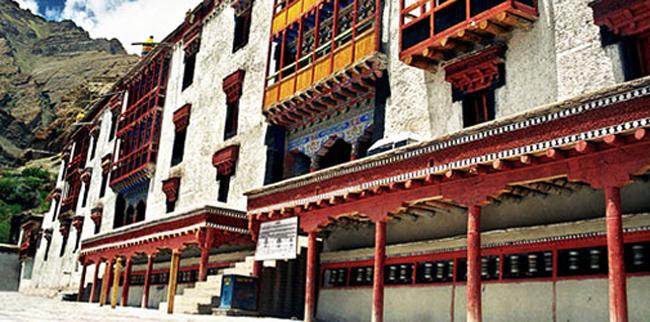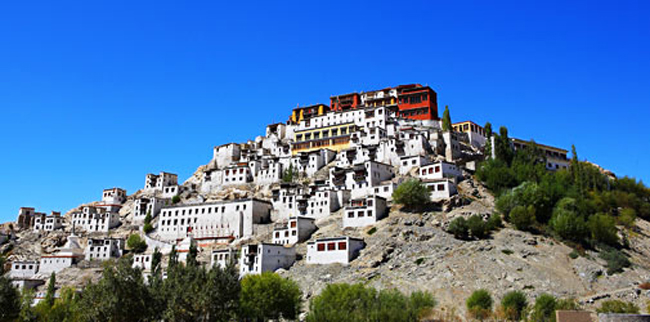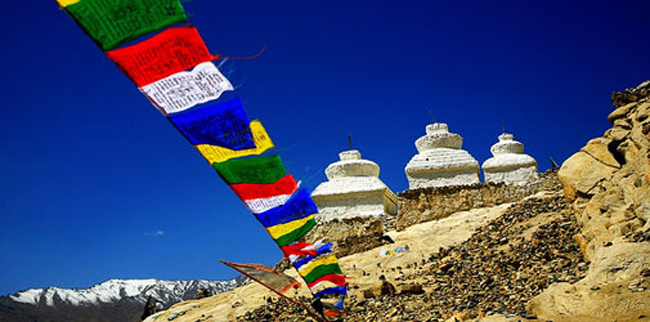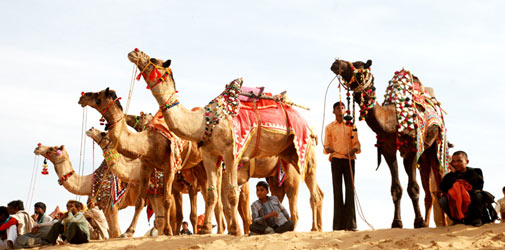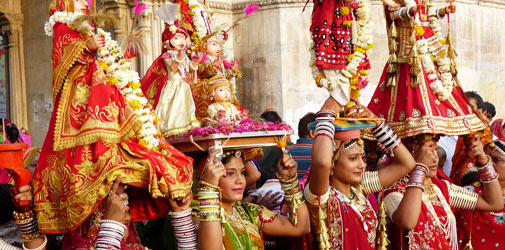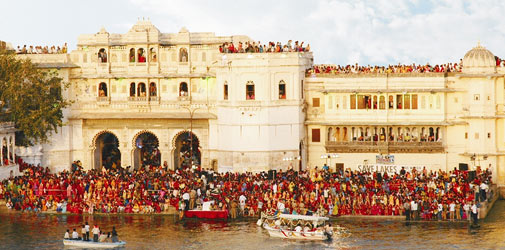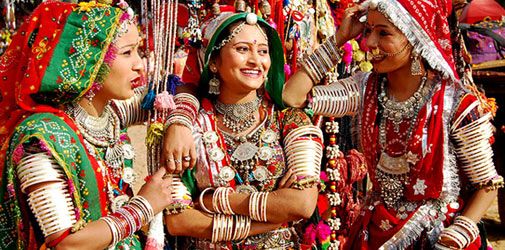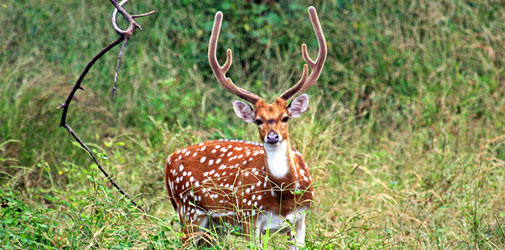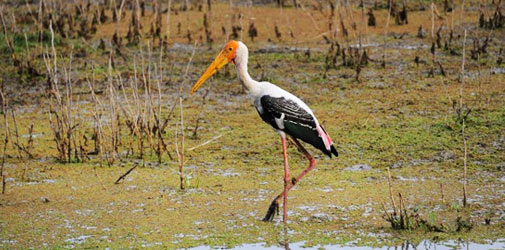Monasteries in Ladakh
The literal meaning of monastery is “a building or complex of buildings, which has a room reserved for prayer, as well as the domestic quarters and workplace(s) of monastics, whether living in community or alone.” The Buddhist monasteries in Tibetan language are known as Ladakhi monasteries or Gompas. These Gompas, mostly built on solitary hill tops, have a serene as well as tranquil aura. Most of the monasteries belong to the Mahayana sect or Hinayana sect of Buddhism, but all of them play a major role in beautifying the lifestyle and culture prevalent in this region. The head-lama is often called as ‘Kushak’, which means ‘reincarnation’. Read further to know about the most popular monasteries of Ladakh.
Hemis Gompa
This monastery was constructed in the 17th century and is one of the largest monasteries in the region. Hemis Gompa is housed just 45 kilometers away from South of Leh. This sacred place belongs to Brokpas, the red sect in Buddhism. This splendid and majestic monastery conducts an annual festival in the month of June or July for two days, commemorating the birth anniversary of Guru Padmasambhava. During the fiesta, the monks perform ritualistic masked dances depicting the victory of good over evil.
Namgyal Tsemo Gompa
This splendid monastery has a three-storey high gold statue of Buddha and was erected in the 15th century by King Tashi Namgyal and is named after its founder. The monastery is a magnificent treasure trove of ancient manuscripts and delicate frescoes. One can also visit the ruins of the historic fort nestled above this Gompa. This site is a vintage point to catch mesmerizing views of the sprawling Leh Valley spread below it.
Sankar Gompa
Sankar Gompa belongs to the monks of Gelug Pa order and features the awesome statue of the Buddhist deity, Avalokitesvara Padmahari or Chenrezig with 1,000 arms and 11 heads. The central assembly hall, known as Dukhang, consists of many interesting and awe-inspiring statues of Buddha. Also, the gompa serves as the official residence of Kushok Bakul, the head of Gelukpa Sect of Ladakh. The monastery remains open for visitors from 7.00 am to 10.00 am, or between 5.00 pm and 7.00 pm.
Shanti Stupa
This marvelous Stupa is a resent construction built in 1985 and was commissioned by Dalai Lama. The Shanti Stupa was built by Japanese Buddhist organization, known as ‘The Japanese for World Peace’. The Stupa celebrates 2500 years of Buddhist religion. A visitor is left tongue-tied by the exotic views of the panoramic surroundings of this monument dedicated to World Peace. The lustrous white stupa looks resplendent at night when it is illuminated with gleaming lights. This Stupa is one of the major crowd pullers of the region.
Thiksey is one of the most beautiful and majestic monasteries of Ladakh, situated at a distance of 20 km from Leh on top of a hill. The monastery belongs to Gelug Pa order and is 12 stories high. The elaborate monastery encompasses an impressive collection of stupas, statues, thankas, wall paintings and swords. One cannot help but be enthralled by various pillars and walls which are engraved with Buddha’s teachings. Its main prayer hall has a massive 15 meter high statue of a seated Buddha. It was built by Paldan Sherab, nephew of Sherb Zangpo. Every year, Gustor festival is celebrated at this gompa from 17th to 19th day of the ninth month of the Tibetan calendar with great pomp and show.
Likir Monastery
This monastery was founded by Klu-Kkhjil in the 11th century but was rededicated to the yellow sect after four centuries of its construction i.e. in the 15th century. Once destroyed by fire, the present building of the Gompa was built in 18th century. Some of the most intriguing features of the monastery are huge clay images of Buddha, old manuscripts, a rich collection of thankas, old religious and domestic costumes of monks and various religious implements. The monastery belongs to Gelug Pa school of Buddhists. Annually, a vibrant festival is held here, from 17th to 19th day of the 12th month of the Tibetan calendar.
Spituk Monastery
Spituk Monastery was founded by Od-de, the elder brother of Lha Lama Changchub Od, in the 11th century. Though the monastery was founded as a Red Hat institution, but it was taken over by the Yellow Hat sect in the 15th century. The monastery has a massive statue of Kali and shelters around 100 monks. From 27th to 29th day of the eleventh month of the Tibetan calendar, a Gustor Festival is held every year. This pristine and tranquil monastery is placed around 8 km from the capital city of Leh.
Lamayuru Monastery
Lamayuru monastery was erected in the 10th century, but now lies mostly in ruins. Legend has it that it is one of the oldest gompas of Ladakh. It is believed that Lamayuru was once a lake, whose water was receded up to the mountains when blessed by a Lama in order to vacate the site for the construction of the monastery. At present, a main hall has survived the passage of time which houses a number of thankas. The mountain on which this marvelous monastery stands tall is adorned with many man-made caves which were used by monks to meditate. Yundrung Kabgyad festival is held at the stunning gompa in summers on 28th and 29th day of the 2nd month of the Tibetan calendar every year.
Shey Monastery
The wonderful Shey Monastery is placed in the palace complex of Shey. This monastery, along with the extensive palace, was built in 1655 by Deldan Namgyal, the king of Ladakh. He constructed this gompa to commemorate the memory of his late father, Singay Namgyal. Though now mostly in ruins, the monastery is still quite enchanting. The monastery is well known for its massive statue of seated Shakyamuni Buddha. This fascinating idol is made of copper and gold. It is believed that this is the second largest idol of Buddha in the entire Ladakh.
Zongkhul Monastery
Zongkhul is a splendid cave monastery located in the Zanskar Valley. The monastery has been skillfully constructed by conjoining two caves on the rock face of the Ating George. The monastery is associated with the famous Indian Yogi, Naropa, from Vikramshila. It is believed that Naropa used these two caves as a site for his solitary meditation. Here, one can have the privilege of viewing 300-hundred year old artistic frescoes, which are said to be the original murals completed by Zhadpa Dorje, a scholar painter of the monastery.
Takthok Monastery
This monastery has the distinction of being the only monastery belonging to Nyingma tradition of Tibetan Buddhism. This monastery is placed almost 46 km from Leh. Takthok literally means ‘rock roof’; the monastery was christened so since its roof and walls have been chiseled out of rocks. The monastery is home to around 55 monks. The central hall of the monastery holds marvelous statues of Maitreya, Padmasambhava and his manifestation Dorje Takposal. Another thing to watch out for in the monastery is the 108 volumes of the Kanjur which contain Buddha’s teachings. A colorful annual festival with lots of exuberating dances is celebrated here on 9th and 10th day of the sixth month of the Tibetan calendar.
Phugtal Monastery
The Phugtal Gompa was established in the early part of the 12th century by Gangsem Sherap Sampo. The monastery is quite famous for its amazing construction that leaves one spellbound. It seems like the structure of the monastery has been conjured out of the cliff-side of the rugged and rocky mountain. The magnificent monastery looks like a giant honeycomb. The monastery has been build around the opening of a cave which looks over a vertical gorge. This remarkable monastery is home to about 70 monks and its structure comprises of a historical library and various prayer rooms.
